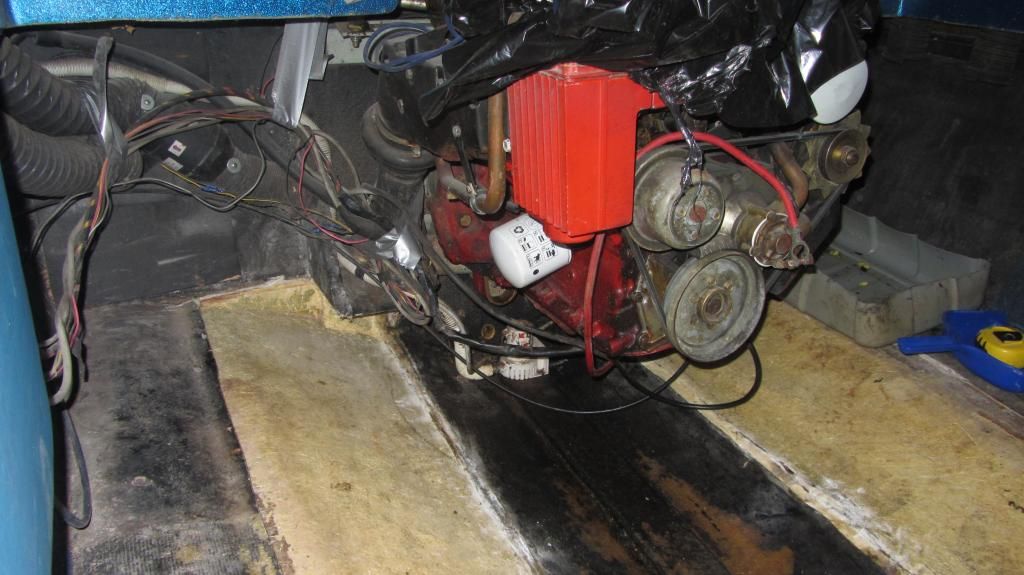This might go a LONG way to help alleviate some misconceptions about Resin Health issues... This comes from a Long Time Resin Industry Technical Instructor, well respected in his field and is called upon to testify in Court proceedings concerning Resin Related Health issues..
"When I developed & taught a course in advanced composites manufacturing last year, the topic of material and workplace hazards related to the material being used was (and is) a HUGE issue. A great deal of research was done to ensure that the students were properly equipped and trained in safety procedures.
Let's make sure that we get the misconceptions about laminates and resins out of the way here. The styrene in polyester and vinylester resins stinks to some (most around this forum) but isn't terribly dangerous to the health of the casual user. One would have to subject themselves to some pretty horrific working conditions for it to have deleterious health effects after only a short exposure. You can detect the odor of styrene at a concentration of 0.2 parts per million in the atmosphere; maximum long-term exposure (8 hrs per day for 20 years) limit is currently legislated at 50 parts per million, and toxic short-term exposure is 5400 parts per million over a 4-hour exposure. So you would pretty much have to seal youself up in a tank and paint the walls with resin for half a day to hurt youself. If you protect exposed skin (wear rubber gloves & long sleeves) and keep your shop reasonably ventilated, you will be fine.
Epoxy resins are a whole different ballgame. The odor is much less pronounced than ester-based resins, but the chemistry is more bothersome to a larger percentage of the population than are poly- and vinylester resins. Fortunately, most don't become sensitized to epoxy resins through atmospheric contact, but through physical contact. Always wear protective clothing and rubber gloves when working with epoxies. Exposure is cumulative, so if you don't take precautions, one day you walk into the shop and suddenly develop a rash, after only a few minutes of physical contact with the stuff per day. Play safe and you can play for a long time.
The real nasties in using resins are the solvents that we use to prepare for, and clean up after, using resins. Acetone is particularly nasty - it is easily absorbed through the skin and mucus membranes either through direct contact or atmospherically. Once in your body, it gets deposited in the liver where it slowly eats away the living cells. After a few years of regularly washing resin off your hands and arms with acetone your doctor tells you to cut back on your drinking because you have the beginnings of cirrosis of the liver, even though you are a teetotaler. Always use solvents in a well-ventilated area, always use rubber gloves when working with the stuff, and always keep solvents covered & sealed. Don't leave that pan of acetone laying open on the bench because you will be using it again in a few minutes; cover it. Put acetone rags temporarily in covered containers and take them outside of your work area when finished. (Be careful not to keep rags in closed containers long-term, though; spontaneous combustion of a bucket full of rags in your shop could ruin your whole day as well as your boat, your shop, your house, etc.) Plastic ice cream containers with snap-on lids are good for shop use of acetone. If you have to use solvents in an enclosed space, such as cleaning the interior of a hull compartment prior to paint, make sure that you have forced ventilation in & out, or better yet, use a self-contained breathing apparatus.
With any of the FRP (Fibre-Reinforced Plastic) laminates, sanding presents some problems. Surprisingly, it is not the resins that hurt you (the cured resin is pretty benign chemically, so your body treats it like any other ingested dust and expels it through mucus discharge), but the reinforcing materials that are the bad guys. As you sand, you break off tiny particles of the fibres, which are sharp and jagged and able to adhere to the lining of your airways and lungs. At best this causes irritation (a hacking cough that won't go away); at worst, some of the fibres used in reinforcements are cancer-causing (silicosis and other forms of lung cancer). Always use a quality dust mask that fits properly. Those of us with face fur need to be particularly careful to get a type of dust mask that has a proper seal between mask and face. I have a longish full beard, so I find that the paper type masks won't fit and I need a dual-cannister rubber mask type.
Hope this helps..."
Having posted this does not mean I've changed my advice about always wearing the best respirator you can afford (I recommend a Full Face one). You only get one set of lungs. I've lost two good friends to emphesema! But My friend that's done the research knows all about both types of resins and he assures me that Epoxy causes much more problems with users than does Poly. BOTH are nasty and should ALWAYS be handled with care!!!























